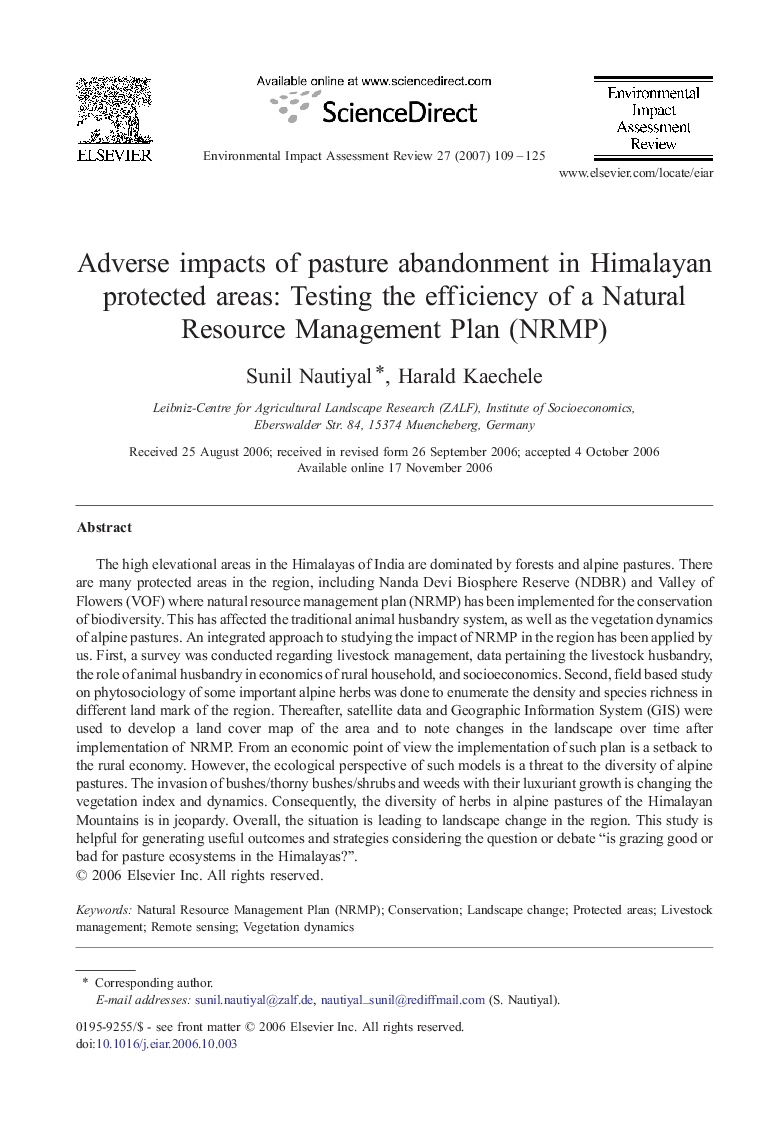| Article ID | Journal | Published Year | Pages | File Type |
|---|---|---|---|---|
| 1053292 | Environmental Impact Assessment Review | 2007 | 17 Pages |
The high elevational areas in the Himalayas of India are dominated by forests and alpine pastures. There are many protected areas in the region, including Nanda Devi Biosphere Reserve (NDBR) and Valley of Flowers (VOF) where natural resource management plan (NRMP) has been implemented for the conservation of biodiversity. This has affected the traditional animal husbandry system, as well as the vegetation dynamics of alpine pastures. An integrated approach to studying the impact of NRMP in the region has been applied by us. First, a survey was conducted regarding livestock management, data pertaining the livestock husbandry, the role of animal husbandry in economics of rural household, and socioeconomics. Second, field based study on phytosociology of some important alpine herbs was done to enumerate the density and species richness in different land mark of the region. Thereafter, satellite data and Geographic Information System (GIS) were used to develop a land cover map of the area and to note changes in the landscape over time after implementation of NRMP. From an economic point of view the implementation of such plan is a setback to the rural economy. However, the ecological perspective of such models is a threat to the diversity of alpine pastures. The invasion of bushes/thorny bushes/shrubs and weeds with their luxuriant growth is changing the vegetation index and dynamics. Consequently, the diversity of herbs in alpine pastures of the Himalayan Mountains is in jeopardy. Overall, the situation is leading to landscape change in the region. This study is helpful for generating useful outcomes and strategies considering the question or debate “is grazing good or bad for pasture ecosystems in the Himalayas?”.
